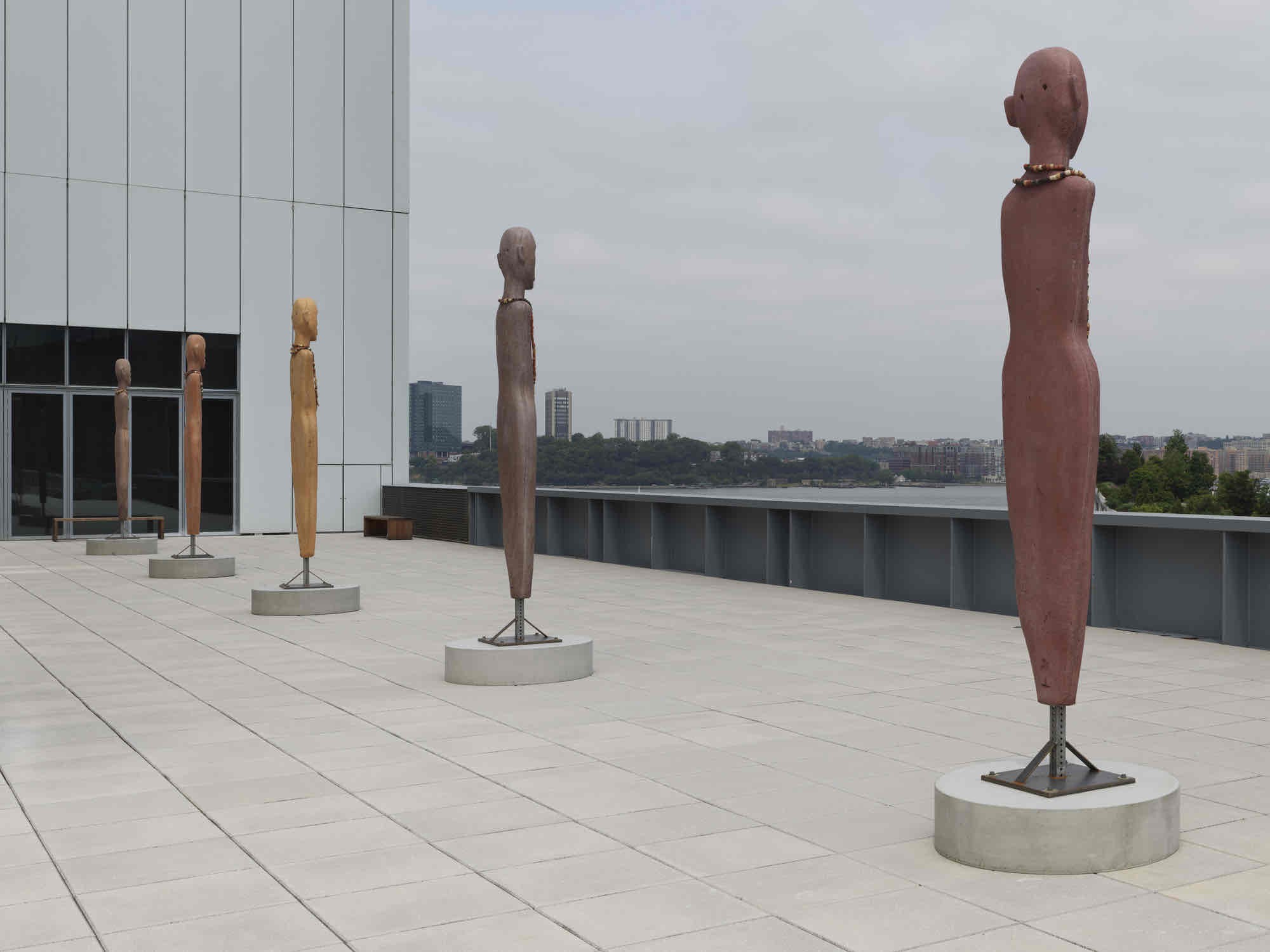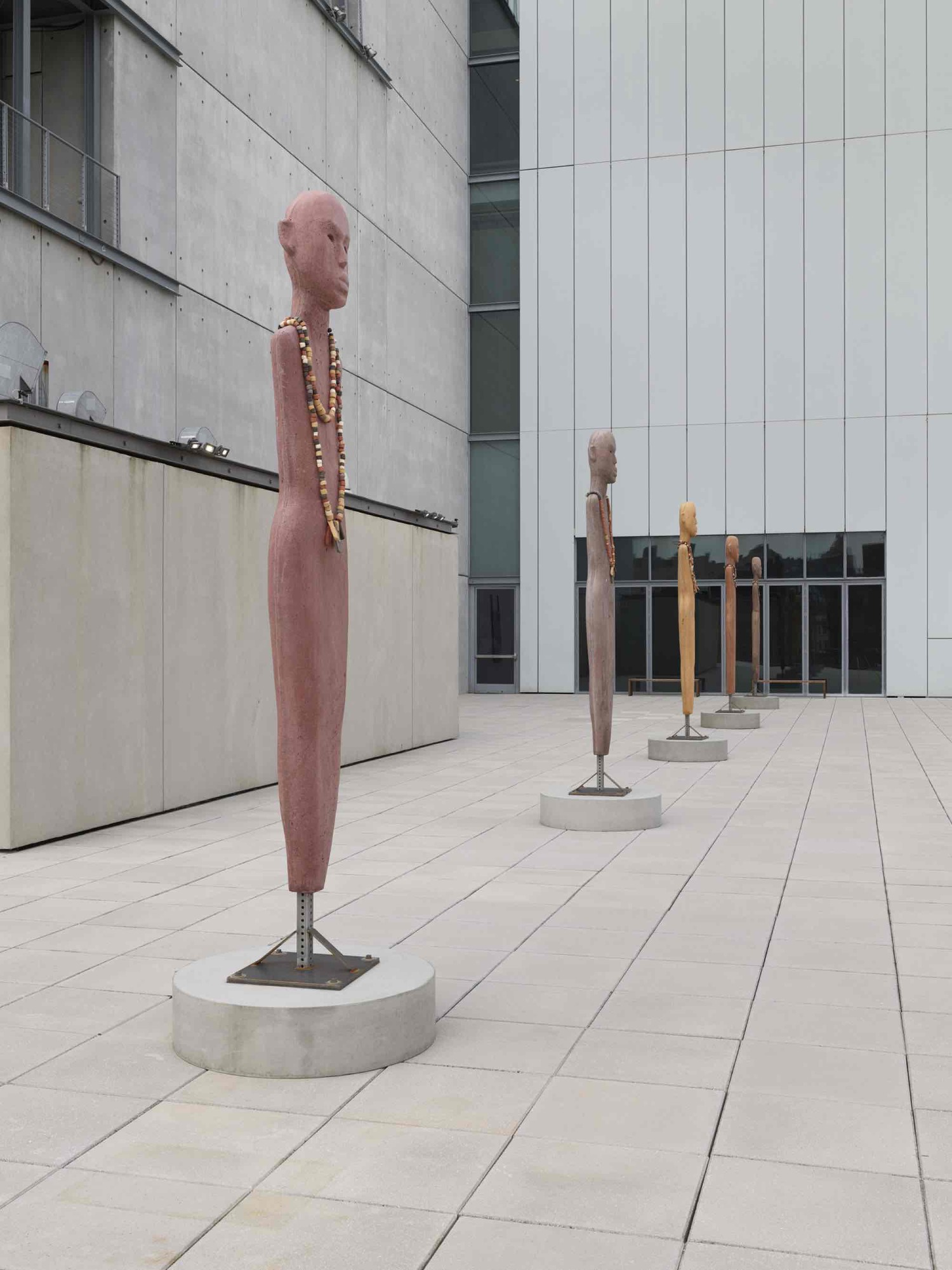Rose B. Simpson
Counterculture
04 Oct 2023 - 21 Jan 2024

Installation view of Rose B. Simpson: Counterculture (Whitney Museum of American Art, New York, June 3–August 13, 2023). Photograph by Ron Amstutz

Installation view of Rose B. Simpson: Counterculture (Whitney Museum of American Art, New York, June 3–August 13, 2023). Photograph by Ron Amstutz

Installation view of Rose B. Simpson: Counterculture (Whitney Museum of American Art, New York, June 3–August 13, 2023). Photograph by Ron Amstutz

Installation view of Rose B. Simpson: Counterculture (Whitney Museum of American Art, New York, June 3–August 13, 2023). Photograph by Ron Amstutz
Through her work in ceramic, metal, printmaking, painting, and performance, Rose B. Simpson (b. 1983) draws connections between our contemporary lives and the landscapes we inhabit. Simpson surfaces the histories of marginalized peoples, underscoring a collective lack of awareness about our ancestral past and the natural world. For Simpson, the five figures on view here—cast in concrete in colors reminiscent of her work in clay—remind us that “we are not independent, that the inanimate are watching, and that we are responsible not only to the present but to the ancestral spirits that inhabit a particular place.”
Simpson titled both the exhibition and the individual works Counterculture as a reference to the importance of communities that live separately from dominant cultures but still have significant cultural impact. These watchful figures serve as stand-ins for those that colonization has aimed to silence, including the Lenape and who inhabited much of present-day Manhattan and the surrounding area until they were forcibly displaced by the Dutch in the seventeenth century. Looking out over the city and the Hudson River, notably through hollow eyes, they suggest an awareness of the world beyond our present reality, pointing to landscapes now obscured from this location.
Simpson often adorns her sculptures with jewelry to convey symbolic meaning. The necklaces worn by these figures were produced by hand with clay taken from the earth and nod to the history of a specific place and the natural world. Ultimately, these elements are intended as objects of empowerment, providing a critical sense of self-respect and aesthetic pride for these monumental figures.
Simpson titled both the exhibition and the individual works Counterculture as a reference to the importance of communities that live separately from dominant cultures but still have significant cultural impact. These watchful figures serve as stand-ins for those that colonization has aimed to silence, including the Lenape and who inhabited much of present-day Manhattan and the surrounding area until they were forcibly displaced by the Dutch in the seventeenth century. Looking out over the city and the Hudson River, notably through hollow eyes, they suggest an awareness of the world beyond our present reality, pointing to landscapes now obscured from this location.
Simpson often adorns her sculptures with jewelry to convey symbolic meaning. The necklaces worn by these figures were produced by hand with clay taken from the earth and nod to the history of a specific place and the natural world. Ultimately, these elements are intended as objects of empowerment, providing a critical sense of self-respect and aesthetic pride for these monumental figures.
